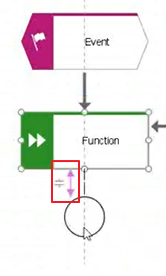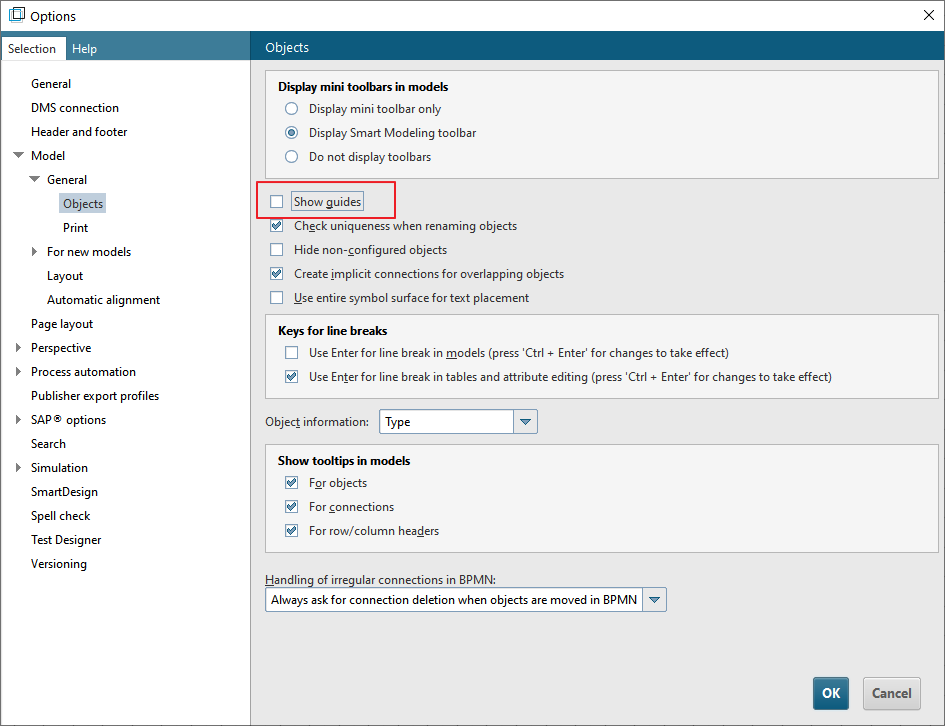Hi
I did some tests here and I couldn't reproduce the efect to the first video and about the second it seems the connection keep as your example. I will do more tests to see better but please can you provide your 'Automatic Aligment' from 'ARIS > Model > For new models > Automatic alignment' .
BR
AO
Hi Alexander
We could reproduce Bug #2. Your report came just in time, so we could fix it for SR15 which going to be released soon.
Thanks a lot for the hint!
About Bug #1: this is due to a "conflict" between the grid and guided modelling, so I will elaborate on this in the following.
For many years we only had the grid to align objects. Aligning an object to the grid means that the center of the object must be equal to a grid point. When the grid is active, and you place a new object or move an existing one the Designer will ensure that the object gets aligned to the grid.
Some time ago we added a new feature guided modelling which supports the users to easier align objects to each other. Thus, when placing and moving objects in addition to the grid we also take other parameters into account: we (a) try to snap horizontally and vertically to neighboured objects and (b) also try to keep the distance of objects constant.
In your concrete example you first placed an event: this was just put onto the grid since no other objects exist which could be taken into account. Next you placed a function: the Designer offered you to place it using the standard distance (its size can be configured via layout options):
You chose to place it more far away such that the Designer placed the function on the grid:
Next you are going to place an XOR: the Designer will first offer again to place it next to the function using the standard distance:
You moved the XOR somewhat down so the Designer next offers you to place it such that the distance between the XOR and the function will be the same as the distance between the event and the function:
Now this is the important point: due to the size of the involved objects and the fact that they have the same distance the XOR will be no longer on the grid! This applies to the objects you placed later on as well.
Thus, at the end of your example when you select all objects and use "align to grid" this means that some objects will jump, since "align to grid" will only take the grid into account!
We could try to make "align to grid" more intelligent such that it also takes distances and alignment to other objects into account. But it would be very difficult to reach the expectation of the user and often lead to results which are not comprehensible for the user.
So, we would recommend to use the grid at all and switch it off and instead just use guided modelling.
Best regards
Ralf
Hi Ralf,
Thanks for your answer and time, it is really useful.
Relate grid modeling, if there would be an option to switch off guided modeling (like you have it for the grid). I understand your point to work without a grid, but you know it would be very difficult to keep the same spaces/distances between objects if they are not in the row or column. If you deal with an OCD client (and usually you do), I would not take a risk to model without grid ))
Best regards,
Alexander



















